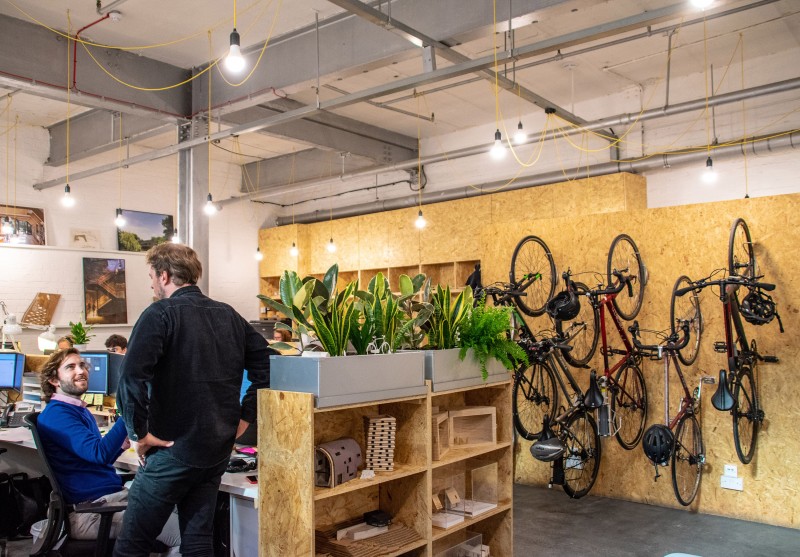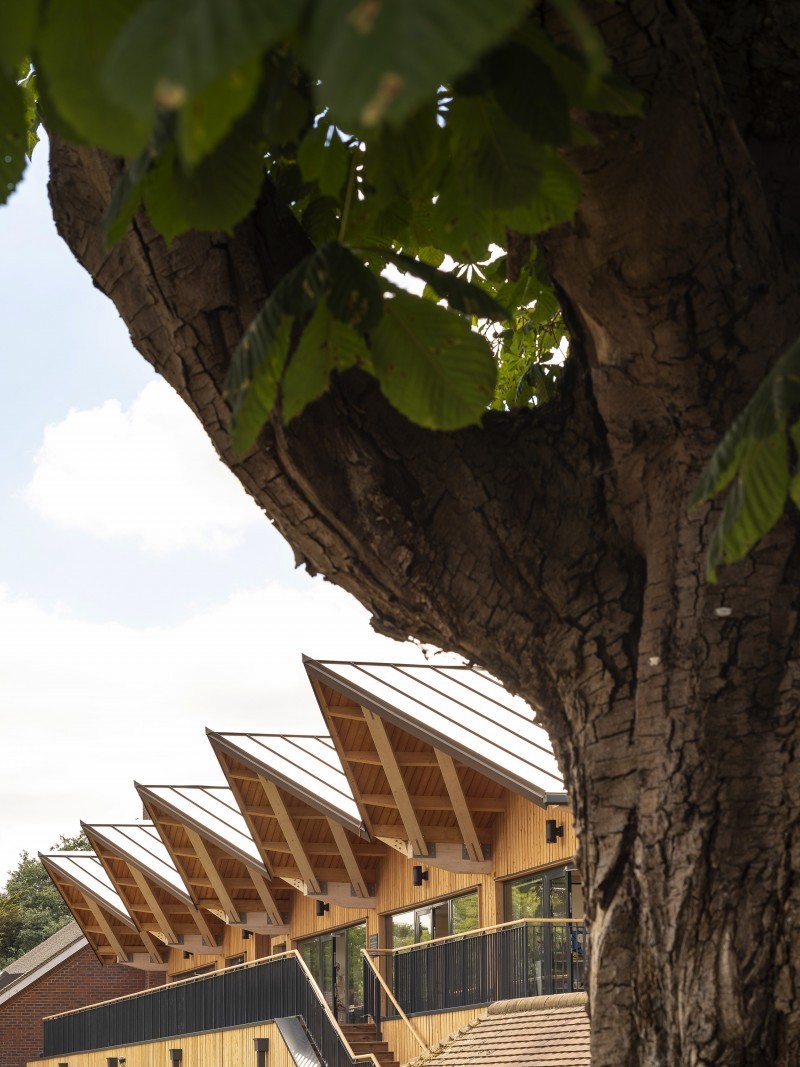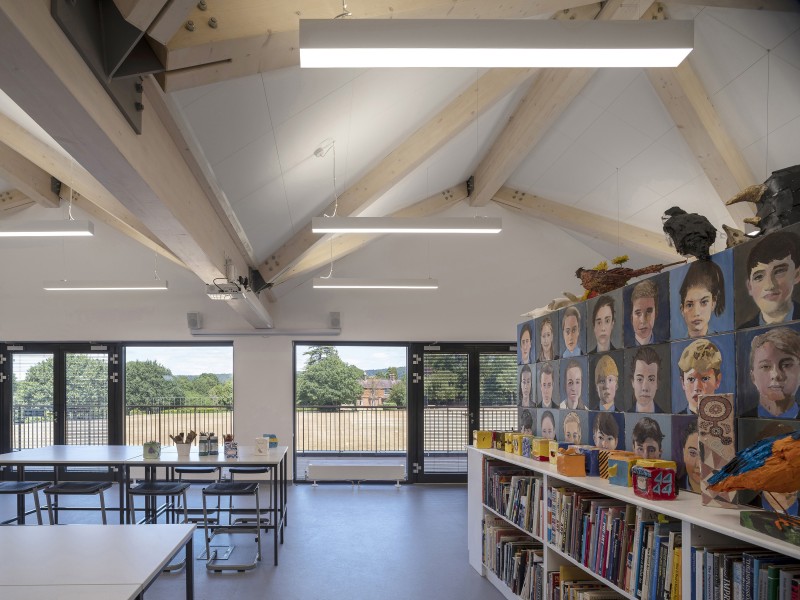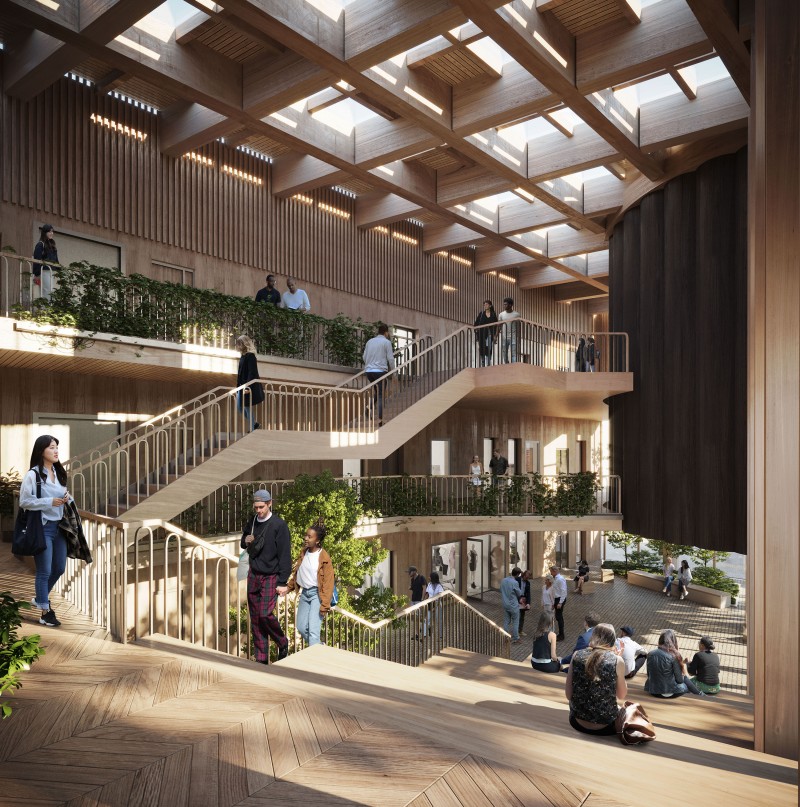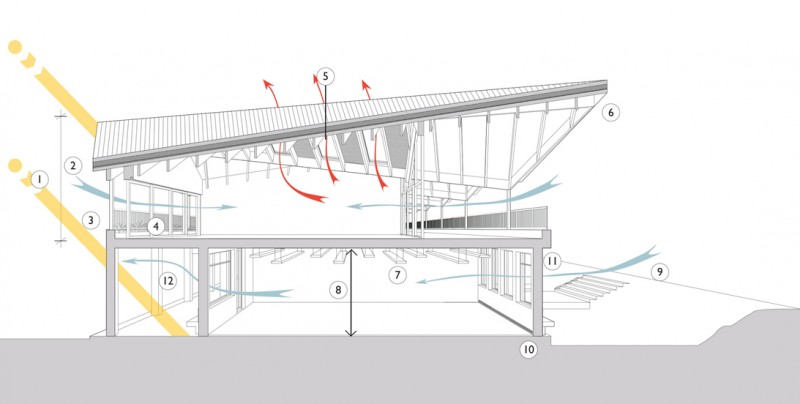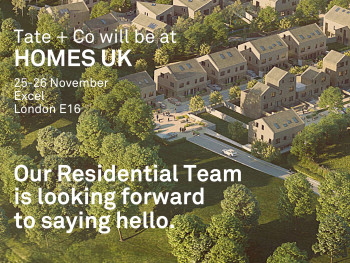With the lockdown ending and schools opening up again, it is interesting to reflect on how we might make our teaching spaces healthier environments for children. There are, of course, changes that we will need to make in the medium term for safe social distancing. However this article is not about the precise measures required to follow the government guidelines. It is about how you can make some easy changes to your classroom environment, inspired by nature, can have a positive impact on your student’s health, wellbeing and educational outcomes. This is more important then ever in these stressful times and creating better connections to nature might be easier than you think.
I have a deep interest in this subject as I am a partner at an architecture practice that designs buildings for both schools and universities. Also, my wife has been a secondary school teacher for 20 years so I know how hard education professionals work to get more from their students.
There is gathering data now, including an in-depth report by the University of Salford (called Clever Classrooms) that ‘naturalness’ in classrooms can account for a 16% improvement in education outcomes. Put simply this breaks down into four key points:
- Good and even daylight
- Good natural ventilation
- Access to outside space
- Views of landscape and/or nature
But what does this translate to in real life? Here are ten ideas, from small to big, that can help you achieve more ‘naturalness’ in your university or school.
Idea 1: Grow indoor plants
First of all, introduce plants into your classroom. This might seem obvious but a lot of teaching spaces lack plant life and they can reduce carbon dioxide levels, along with pollutants and help regulate air temperature. Forest floor plants require lower light levels so they are perfect for indoor spaces, and this also means they are more robust.
Idea 2: Openable windows
Make sure your windows open. Pretty much all windows open, but might be stuck or need adaption. Opening windows can help with natural ventilation and also has massive benefits in terms of control for teachers and students of their learning environment.
Idea 3: Make the heating system easy to control
It is really important to make the heating system in all teaching spaces is easy to control. Generally we favour radiators and valves as these are obvious and clear. We have used this strategy in quite large projects such as the Eden Hotel (currently on site) where we have radiators in all the rooms so guests can clearly understand how to control the temperature without having to refer to a manual!
Idea 4: Introduce natural materials
Natural materials can create a warm and pleasant feel to a space, and can have a calming effect on students. The timber-framed new Townsend Building we designed for Cranleigh School is an extreme example of this but at a smaller scale you can introduce a few natural timber items into your existing space, such as furniture or finishes, to get a similar effect.
Idea 5: Paint your room
This is an easy way to make a brighter space. There are some really good reflective paints that get daylight deep into a classroom and allow you to turn on the lights half an hour later. I must admit I was dubious but we recently used Dulux Light and Space on the new classrooms at Eden and it really does work.
Idea 6: Install a rooflight
You can improve the daylight spread in a room by installing a rooflight. Often you find that learning spaces have a lot of glazing at the opposite end to where you are teaching. A new rooflight can help create a much more even spread of daylight. It can also help contrast and lip reading for those with hearing impairments. If a rooflight is not achievable due to the building layout an alternative is to install daylight bulbs where you tend to stand.
Idea 7: Engage with the landscape
If you are able to make significant changes to your building (or build a new one), you should make sure you visually engage with any surrounding landscape if you can. The key is to maximise your views out to it, not hide from it. This means including large windows in the façade of any school building and even adding glazed doors at ground level that can be opened up to the outside.
Idea 8: Create green spaces for collaboration
Well lit, verdant common areas between learning spaces can promote creative interaction. It also sets the tone of your institution. At York St John University new Creative Centre – currently under construction – we designed a new entrance atrium space with greenery across multiple floors. It’s worth noting that we didn’t put any at the higher levels as you must consider the future maintenance of interior spaces.
Idea 9: Create cross ventilation
Fresh air is as important for healthy learning environments as light and plant life. If you get the chance to build new classrooms it is important to think about how it moves through the building. Our new building for Cranleigh School has no internal corridors, and this means that all classrooms are dual aspect and can have great cross natural ventilation. It also means the building ties into the school’s philosophy of healthy outdoor living.
Idea 10: Think about Passivhaus
The final, and most ambitious, idea is to consider a low-energy design approach called Passivhaus. This is a fabric-first construction method where you create a super-insulated building which gets fresh air via a mechanical ventilation heat recovery system in the winter months. This means you get an incredibly comfortable internal environment, not too hot and not too cold, with great air quality throughout.
I hope that you can start to think about implementing some of the easier ideas here straight away at your school or university. In the final analysis, achieving ‘naturalness’ comes down to great holistic placemaking on a learning campus. But this is not always possible, and in the meantime even small measures towards creating a healthier learning environment for our children can help enormously.

